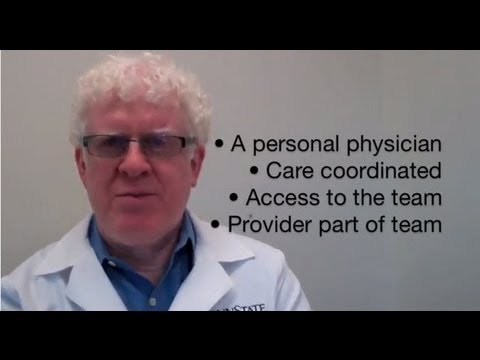What is the “Goal” of a Patient-centered Medical Home?
Contents
- Defining the Patient-centered Medical Home
- The Goal of a Patient-centered Medical Home
- The Components of a Patient-centered Medical Home
- The Benefits of a Patient-centered Medical Home
- The Challenges of Implementing a Patient-centered Medical Home
- The Future of the Patient-centered Medical Home
- Case Studies of Patient-centered Medical Homes
- FAQs about Patient-centered Medical Homes
- Resources for Implementing a Patient-centered Medical Home
- What’s Next for the Patient-centered Medical Home?
A patient-centered Medical Home is a term used to describe the new paradigm for health care delivery. It’s a system of care that provides patients with more choice and control, while reducing costs and improving outcomes.
This Video Should Help:
Defining the Patient-centered Medical Home
The Patient-centered medical home is a model of care that puts patients at the center of their health care. The goal of the medical home is to provide patient-centered, coordinated, continuous, accessible, and high quality care.
The model of care has been developed and tested through research funded by the Agency for Healthcare Research and Quality (AHRQ) and the Centers for Medicare & Medicaid Services (CMS). The results of this research have shown that the medical home model of care can improve quality, access, and efficiency in our health care system.
The medical home model of care is based on a set of core principles:
-Patients are at the center of their care.
-Care is coordinated and continuous.
-Care is accessible.
-Care is high quality.
-There is a focus on population health.
The medical home model of care can be implemented in many different ways, depending on the needs of the patients and families being served. There is no one size fits all approach to implementing the medical home model of care.
The Goal of a Patient-centered Medical Home
The Patient-centered Medical Home (PCMH) is a care delivery model that emphasizes care coordination and communication between the patient and their health care team. The goal of the PCMH is to provide high-quality, patient-centered care. In order to achieve this goal, the PCMH relies on a team-based approach to care delivery, which includes primary care providers, specialists, mental health providers, and other members of the patient’s health care team.
The PCMH model has been shown to improve the quality of care for patients with chronic conditions, such as diabetes and heart disease. In addition, the PCMH model has been shown to reduce hospitalizations and emergency room visits. The PCMH model is also associated with increased patient satisfaction.
The PCMH model is supported by research and funding from a variety of sources, including the National Institutes of Health (NIH), Centers for Medicare & Medicaid Services (CMS), and private foundations. There are a number of resources available to help practices implement the PCMH model.
The Components of a Patient-centered Medical Home
The Patient-centered Medical Home (PCMH) is a model of care that emphasizes care coordination and communication to make sure patients receive the services they need, when they need them. The PCMH model is research-based and has been shown to improve the quality of care patients receive, while also reducing costs.
The PCMH model has five key components:
1. A team-based approach to care: All members of a patientufffds care team ufffd including doctors, nurses, social workers, and others ufffd work together to coordinate care and make sure patients get the services they need.
2. Comprehensive and continuous care: Patients have a ufffdmedical homeufffd where they can receive all the primary and preventive care they need. They also have a regular doctor or provider who knows them well and can provide continuity of care.
3. Coordinated and integrated care: Care is coordinated across all providers and services, so that patients get the right care at the right time. For example, if a patient sees multiple specialists for different conditions, each specialist communicates with the others to make sure everyone is on the same page.
4. Accessible care: Patients can easily access their medical home when they need to ufffd for example, by being able to schedule appointments quickly or getting after-hours advice by phone.
5. Focus on quality and safety: medical homes focus on providing high-quality, safe care that is based on the latest evidence. They also work to continuously improve the quality of care they provide.
The Benefits of a Patient-centered Medical Home
The Patient-centered medical home (PCMH) is a care delivery model that emphasizes care coordination and communication to transform primary care into what patients want it to be: reliable, accessible, continuous, comprehensive, family-centered, culturally and linguistically appropriate, and compassionate.
The PCMH is based on the premise that the healthcare system should be organized around patients and their familiesufffdnot around diseases, procedures, or episodic visitsufffdwith the goal of ensuring that patients receive the right care at the right time.
In contrast to traditional primary care practices in which physicians work in isolation and are reimbursed for the number of patient encounters they see, PCMHs are team-based and reward physicians for providing high-quality care and improving patient health outcomes.
The PCMH model of care has been shown to improve quality and patient experience while also reducing healthcare costs. Numerous studies have demonstrated that when implemented properly, the PCMH model can result in better management of chronic disease, improved health outcomes, lower rates of hospitalization and emergency department visits, and reduced healthcare costs.
The Challenges of Implementing a Patient-centered Medical Home
The Patient-centered medical home (PCMH) is a model of care that emphasizes coordination and communication among a patientufffds care team. The goal of the PCMH is to provide patients with high-quality, coordinated care.
Although the PCMH model has shown promise in improving care quality and patient outcomes, implementation of the model can be challenging. One of the biggest challenges is finding the resources needed to support the extra time and effort required to coordinate care among a team of providers. In addition, research on the PCMH is still emerging, so there is a lack of evidence on the most effective ways to implement the model in real-world settings. As a result, many primary care practices are struggling to make the transition to a PCMH.
Despite these challenges, the PCMH model offers an important opportunity to improve the quality of care for patients. With more research and funding, primary care practices can overcome the challenges of implementing a patient-centered medical home and provide their patients with high-quality, coordinated care.
The Future of the Patient-centered Medical Home
The Patient-centered Medical Home (PCMH) is a model of care that puts patients at the center of their own care. In a PCMH, patients work with their doctors to manage their health and coordinate their care across the healthcare system.
PCMHs are being piloted across the country and are being studied by researchers to see if they improve care quality and patient outcomes, while also reducing healthcare costs. Many insurers and employers are interested in the PCMH model and are providing funding and resources to support its development.
The goal of the PCMH is to provide better coordinated, more efficient, and higher quality care for patients.
Case Studies of Patient-centered Medical Homes
The Patient-centered Medical Home (PCMH) is a care delivery model that puts patients at the center of their own care. In this model, patients work with a team of care providers to develop a plan of care that meets their individual needs.
There is a growing body of research on the PCMH model, including case studies of specific medical homes. This research has shown that the PCMH model can improve the quality of care and patient outcomes, while also reducing the cost of care.
There are numerous organizations that are providing resources and funding for medical homes, including the Centers for Medicare and Medicaid Services (CMS), the Agency for Healthcare Research and Quality (AHRQ), and the Patient-Centered Outcomes Research Institute (PCORI).
FAQs about Patient-centered Medical Homes
Patient-centered medical homes (PCMHs) are a model of care that emphasize coordination and communication among a patientufffds care team. The goal of a PCMH is to provide coordinated, high-quality care that is patient-centered, efficient, and effective.
PCMHs are a relatively new model of care, and there is still ongoing research to determine the most effective ways to implement and sustain them. However, PCMHs have shown promise in improving the quality of care while reducing costs.
One way to think of a PCMH is as a ufffdhome baseufffd for all of your health care needs. Your primary care provider (PCP) is at the center of your care team and works with you to coordinate all aspects of your care. This includes preventive care, treatment for chronic conditions, and management of acute illnesses or injuries.
If you have any questions about PCMHs, please feel free to contact us. We will be happy to provide you with more information or connect you with resources in your community.
Resources for Implementing a Patient-centered Medical Home
The Patient-centered medical home (PCMH) is a model of care that emphasizes care coordination and communication to transform primary care into what patients want it to be: Accessible, continuous, comprehensive, family-centered, coordinated, compassionate, and culturally effective.
The PCMH is based on the core principles of patient-centered care, which include:
1. Respecting and valuing patients as individuals
2. Listening to and engaging patients as partners in their own care
3. Providing high quality and continuously improving health care services that are patient-centered, accessible, well coordinated, continuous, safe, and effective.
4. Supporting patients in making healthy choices and self-managing their health
5. Ensuring that each patient has a personal physician or nurse who leads a team of health professionals that takes collective responsibility for the ongoing care of the patient
6. Making effective use of clinical information technology to support all aspects of the medical home
7. Paying primary care providers for performance rather than volume of services rendered
What’s Next for the Patient-centered Medical Home?
The Patient-centered Medical Home (PCMH) is a care delivery model that emphasizes care coordination and communication to transform the way primary care is delivered. The PCMH model of care has been shown to improve access to care, quality of care, and patient satisfaction, while also reducing costs.
Although the PCMH model has been shown to be effective, there are still many challenges that need to be addressed in order to improve the delivery of primary care. One of the biggest challenges is finding the right mix of funding and resources to support the PCMH model of care.
In order to move the PCMH model forward, it is important to continue to research and evaluate the effectiveness of this care delivery model. Additionally, it is important to provide quality resources and management tools for practices that are looking to implement the PCMH model of care.
A “patient-centered medical home” is a term that has been used to describe the payment model of a practice. It is also referred to as a “primary care practice.” Reference: patient-centered medical home payment model.







